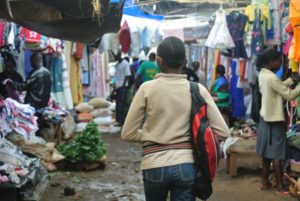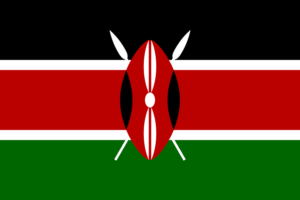Even though the country’s exportation of clothes has been on the rise, its importation of second hand clothes (also known as Mitumba) into Kenya, saw a growth of 30 percent in 2018, as an astounding 177,160 tonnes of second hand clothes valued at 16.9 billion Kenyan Shillings, was shipped in.
This is the highest quantity ever shipped into the East African nation.
While the market for second hand clothes and shoes market appears to be growing however, the clothes export scene isn’t doing badly either.
Business Daily reported that 22 Kenyan apparel factories enjoyed a 25.8 percent increase in export sales as well. The 25.8 percent increase, is valued at 41.6 billion Kenyan Shillings, a huge difference from 2017’s 33 billion Kenyan Shillings earnings.
The publication also added that the export processing zones-based factories that reportedly employ 46,248 Kenyans shipped out men, women and children cloth wear to global retail chains including the 1,014-store JC Penney (US and Puerto Rico), Walmart (US), Kohl’s (US), Macy’s (US), Jones New York (US), Dollar General (US) and Ross (US).

(Photo By Katrina Shakarian)
The increased second-hand imports however, have been a major cause of worry for new clothes dealers who say it is fast wiping out the local market leaving most tailors to survive on repairs, school uniform and the business of making outfits strictly for certain occasions.
The Kenya Association of Manufacturers has advocated for the imposition of punitive duty to deter increased import of new clothes sold in local retail stores at low prices.
In 2017, official data from the Kenya National Bureau of Statistics showed that Kenya spent 6.6 billion Kenyan Shillings importing second-hand clothes in the first half of the year.
Data (also from the Kenya National Bureau of Statistics), showed that the import bill for second hand clothes, (‘mitumba’), grew by 8.2 per cent from the 6.1 billion Kenyan Shillings spent in the first half of the year before (2016).
It also added that volumes grew 12.4 per cent to 69,862 tonnes from the 62,158 tonnes imported at a similar period in 2016.
By the end of 2017, traders had reportedly spent 13 billion Kenyan Shillings in order to ship in 135,868 tonnes of used clothes consignments while 2016 saw 131,940 tonnes worth 12.9 billion Kenyan Shillings, brought in.
Kenyans prefer second hand clothes (mitumba) due to their high quality, designs, and rather reasonable prices. This is why the importation of such goods, has continued to increase.
It has however, had a negative effect on the local cotton industry.

On the 10th of April 2019, Gikomba market, the country’s biggest open air space where the second hand clothes mitumba business flourishes, was burnt down, leaving thousands of traders with huge losses.
An estimate of about 2,000 structures were affected by the fire.
Traders claims goods worth millions of Kenyan Shillings, were lost in the fire, which started at around 3am.
This tragedy, occurred barely two months after another fire on February 6 2019 happened in the same market. Most of the burnt stalls sold clothes and shoes.
Gikomba Market has suffered many fires over the years and almost after every incident, investigations are launched and committees formed to probe it but no report has ever been released to the public.
In 2018, the market experienced three fire cases. The frequency led to President Uhuru Kenyatta calling for investigations into the incidents.



